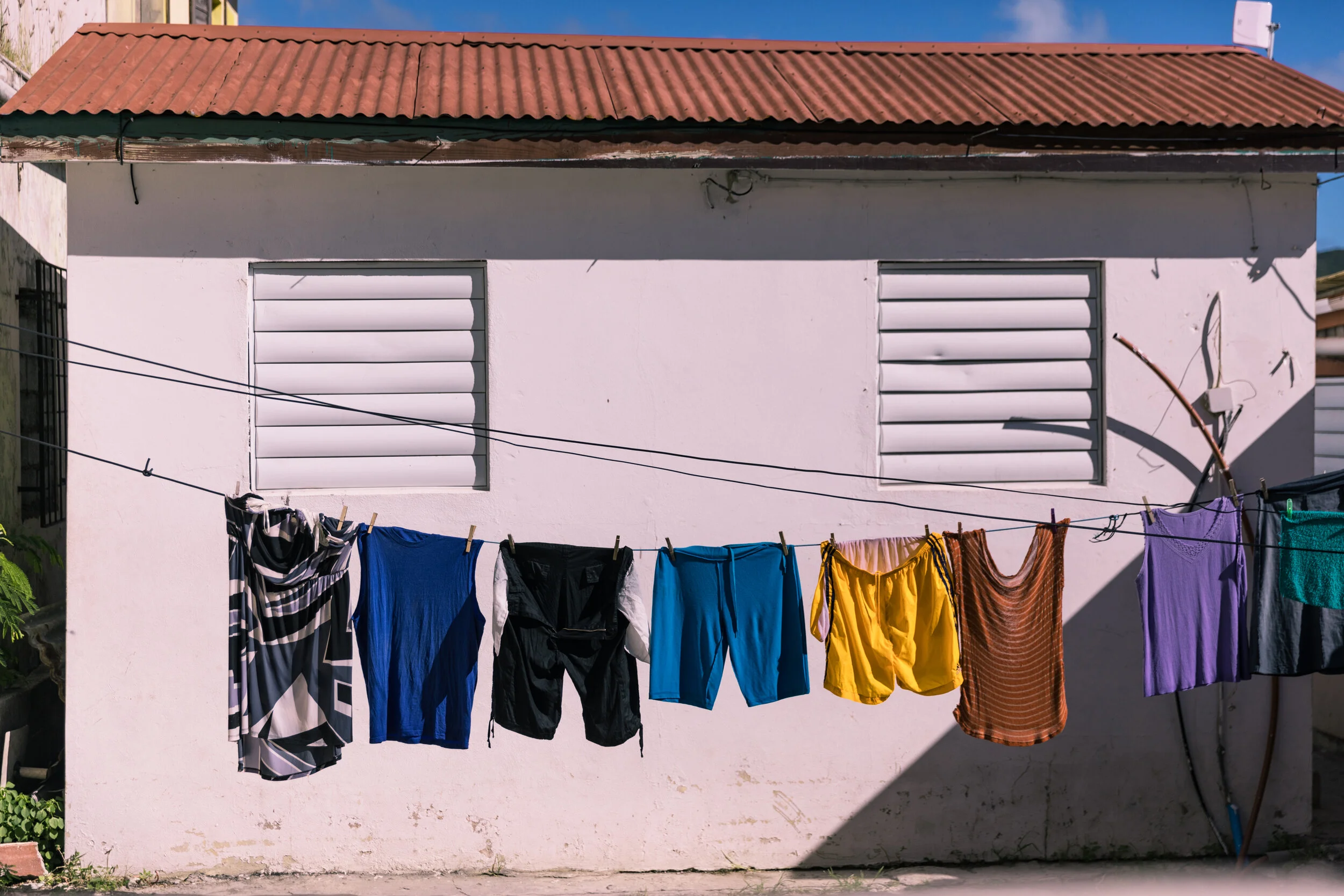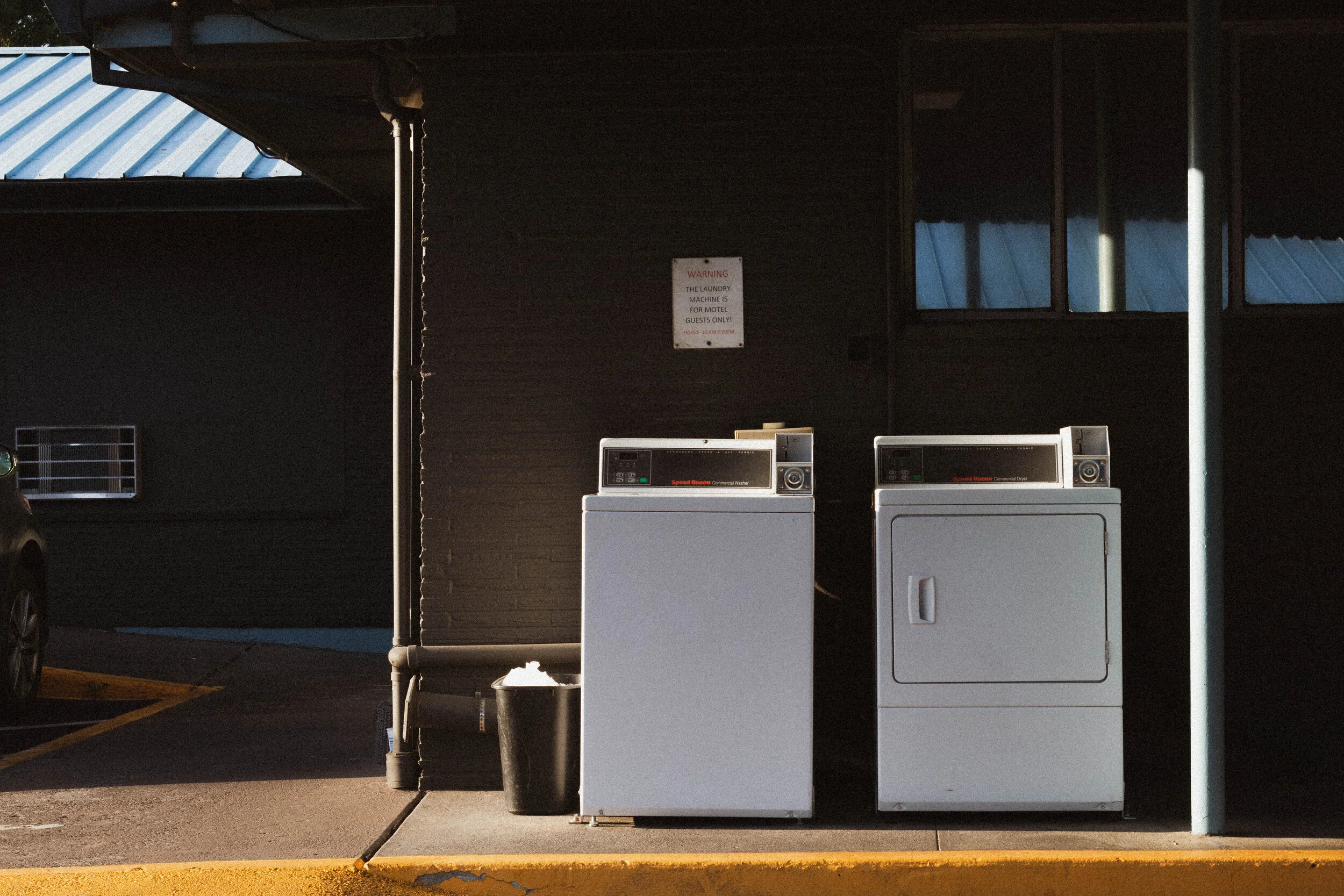Drying Your Clothes Is a Political Act
Once your clothing is washed, you need to dry it properly according to its need. Understand that your clothing has been affected by gender dynamics, people trying to sell you shit you don’t need, and modern conveniences that harm the environment. Yes, your clothing is political. Get to know the facts and you’ll make better decisions.
Line Drying
Photo by Joaquin Toro @joaquinunsplash
Hang drying is your best option for keeping your clothing longer. It has almost no carbon footprint especially compared with the energy-intensive tumble dryer. On a sunny, windy day, your clothing will dry in no time without static. Most of the world dries their clothes without a dryer. In the United States, it’s not as widely used. There are Homeowner’s Associations that ban clotheslines from being used because of a stigma that line drying is for people in poverty. Guess who has a low carbon footprint? People in poverty. Maybe their poverty isn’t the problem. On the subject of money, you can save some money by line drying and put it towards that pricey slow fashion designer top that sparks joy for you. And that purchase will go further because line drying puts less stress on your clothing. Win-Win.
Hang your clothes in a way that allows air to flow freely by using a clothesline or a drying rack. The drying rack is great for apartments or people without outdoor space. Don’t layer clothing because it will stop airflow causing mildew. Sweaters should be laid on a sweater rack to avoid stretching from hanging.
Machine Drying
If hanging laundry seems like too much work, then use lower drying temperatures for a longer time. The one positive of using a dryer is time. Also, clothes feel great coming fresh from the dryer. However, that huge time-saver comes at a cost to the environment because it is an energy hog. I get it, I grew up using dryers and I still use them. Only recently did I install a clothesline in my yard.
Photo by Zachary Keimig @zacharykeimig
If you would rather enjoy the convenience of a dryer, just know that not everything belongs in there. Wool sweaters may be felted or shrink in the dryer. Acrylic sweaters get static-y in the dryer. Bras, lacy delicates, elastic and spandex items should be hung to dry. Tumble dryers overheat elasticized [stretchy] items and break down the fibers over time. Those tiny holes that appear in your leggings and tees after a while are the effect of high dryer heat. Synthetic fibers like polyester and acrylic transform in dryer heat because they are plastic. You experience that sort of transformation when you put on a freshly dried garment that fits too snugly. Special embellished items that have sequins or beadwork should be line dried.
Dryer sheets are not entirely needed. Dryers tend to create static electricity due to the environment created in the machine. You can use wool felt balls, or balled up aluminum foil in your load to absorb that static.
Understand what your clothing is made from because the fiber content determines how you dry your garment. Read the garment tags to find out the content. Get familiar with wool, silk, cotton, acrylic, and polyester. This is adulting 101 for all genders, take notes. Get past the stigma of drying your clothes on a line.



